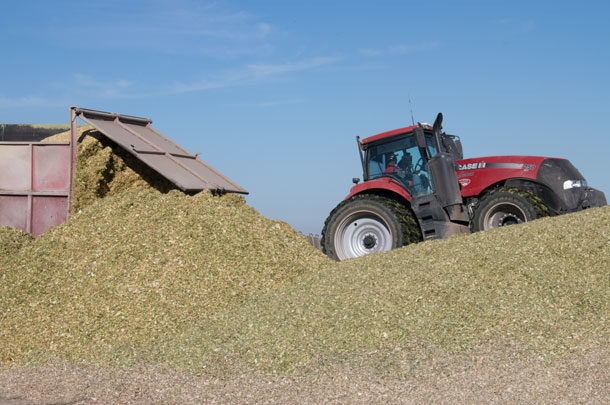Here is a recommended action plan to make the most out of this year’s silage crop:
• Estimate potential forage yield. Although it is difficult to accurately predict the forage yield potential, this is important to plan for harvest and gauge the amount of silage to be stored.
• Manage harvest timing. Corn under these conditions will usually have few developed ears and brown or dead leaves that lose quality, tonnage and dry matter. Timely harvest is essential to capture the most value from the crop. It is key to harvest while the crop is still at the optimum moisture content.
• Monitor moisture content. Plant conditions can be misleading under these conditions. Start monitoring moisture levels early in the drought and harvest once they reach recommended levels. Waiting too long can cause silage heating and dry matter loss, as well as encourage the growth of molds and yeast.
• Beware of nitrate accumulation. Another effect of drought can be the accumulation of nitrates in the plants, especially in fields with high nitrogen applications. This situation can be magnified when rain occurs: Delay chopping three to five days after a significant rainfall to allow plants to convert the nitrates.
• Reduce nitrates in harvested silage. With most of the nitrates being stored in the lower stalk sections, by raising the cutterbar 12 inches, this part of the plant can be avoided. Additionally, with properly chopped and packed silage, the fermentation process can help reduce nitrates by 30 to 50 percent.
• Test silage before feeding. Allow silage to ferment long enough to allow nitrates to convert to safer compounds, reducing livestock exposure to feed containing nitrates. Once the bag, bunker or silo is opened, have the silage tested to ensure nitrate concentrations are not at a toxic level. Consult your nutritionist if you have any concerns about feeding drought-stressed silage. ![]()
—From Mycogen Seeds news release
PHOTO: It's especially crucial for corn that has experienced drought to be chopped at the optimum moisture content. This ensures better packing and better fermentation. Photo by Lynn Jaynes.










